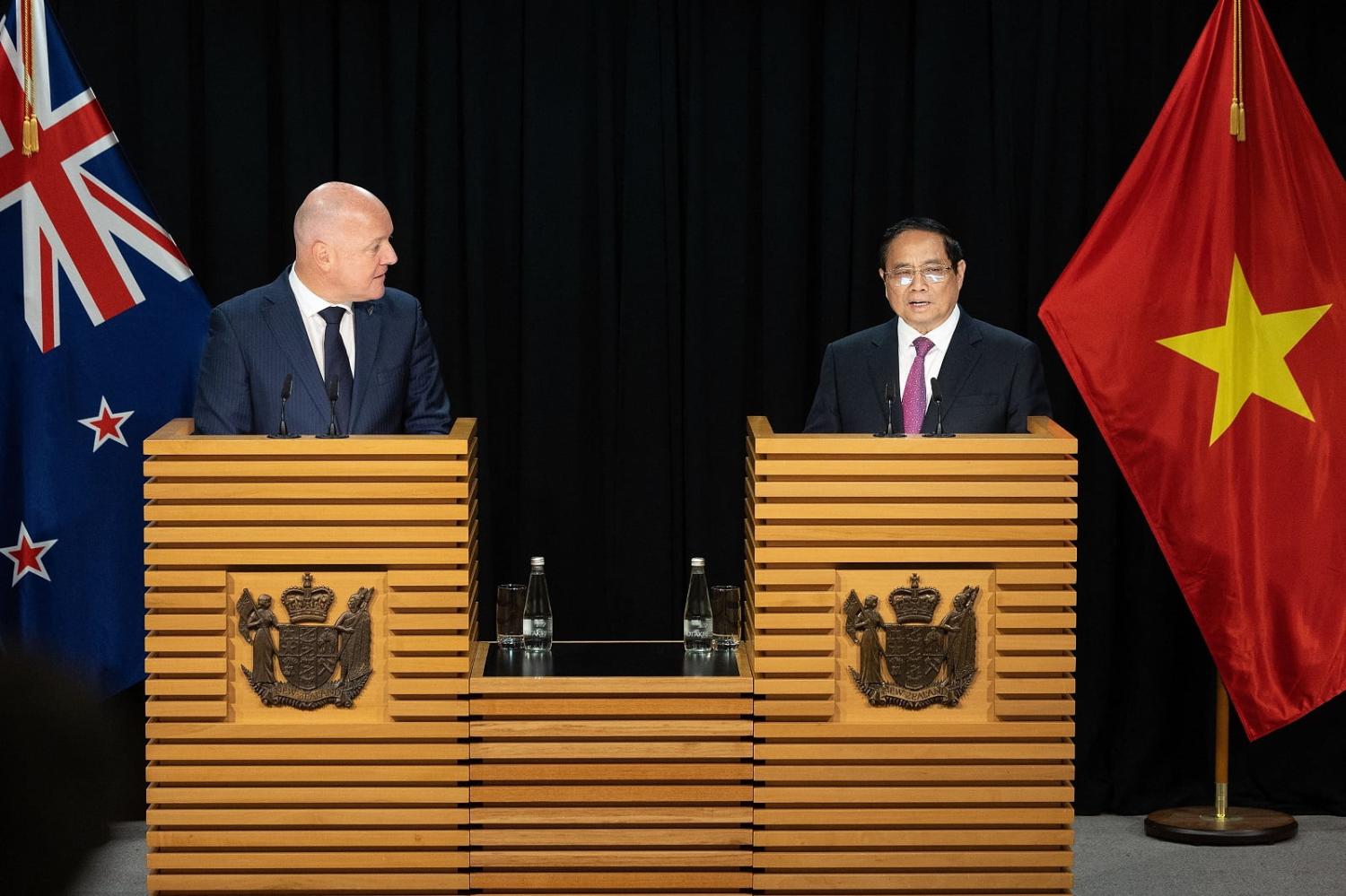New Zealand Prime Minister Christopher Luxon is new in the job, yet he took time away to fly across the Tasman earlier this month and meet the various leaders of the Association of Southeast Asian Nations during the Australia–ASEAN summit. Southeast Asia is seen as critical to New Zealand’s security and prosperity, at a time when ASEAN leaders have privately encouraged the country to step up and play a bigger, more proportionate role in the region.
In fact, a recently released Ministry of Foreign Affairs and Trade (MFAT) document was critical of the state of New Zealand’s relationship with the Southeast Asian region and ASEAN as a bloc, noting that in 2019, the previous government under Labour had conducted 41 distinct visits to 17 countries in Europe as compared to 23 visits to 7 countries in Southeast Asia, many of which were for regional meetings. Trade data seems to back up the assessment that New Zealand has let the relationship drift.
From 2015 to 2023, total trade between New Zealand and the ASEAN region grew by 188%, but trade with ASEAN as a percentage share of New Zealand’s total trade only grew from 12.5% to 12.7% between 2015 and 2022, before jumping to 14.7% in 2023.
When broken down by country, only Singapore, Malaysia, Indonesia and Vietnam have been able to grow their percentage share of New Zealand’s trade. Furthermore, New Zealand carries a trade deficit with all the ASEAN countries except Indonesia and the Philippines, with its regional trade deficit having grown from NZ$2.34 billion in 2015 to NZ$6.36 billion – an increase of more than 270%. Compare this to New Zealand’s trading relationship with China, its biggest trading partner, where New Zealand runs a trade surplus of US$454 million with trade having grown from 18% to 27% between 2013 and 2023.
New Zealand has indeed dropped the ball on its relationship with Southeast Asia and the ASEAN bloc. Post-2008, the country pursued its trading relationship with China, as the New Zealand–China Free Trade Agreement entered into force. As US–China strategic competition has developed in recent years, New Zealand has not simply sided with the United States, but instead tried to tread the line between the two superpowers – the value it puts on its relationship with China can be seen in the upgrading of the FTA in 2022.
Even as MFAT acknowledged the changing global environment and increase in economic and security risks for the nation in its 2023 assessment, the government seemed to initially set its sights on India as the de-risking option for trade, with the National party having campaigned on achieving an FTA with India within three years, and Trade Minister Todd McClay having been quoted as saying that they were “doing everything possible” to achieve that.
It is encouraging to see the government shift some of its attention to Southeast Asia. New Zealand can ill afford to continue to ignore the region. As the MFAT report notes, ASEAN is home to 9% of the world’s population, and as a bloc, is the fifth-largest economy in the world. It is home to some of the fastest-growing economies in the world. In 2023, the bloc had a GDP growth rate of 4.6% as compared to 1.1% for the United States and 0.5% for the Euro area, while it also has a young population with a middle class that’s predicted to grow 5% a year till 2030. With an annual export of only NZ$8.3 billion to the region, there is clearly incredible potential for ASEAN as an untapped market.
More importantly, the value of ASEAN should not be seen from just an economic perspective. Southeast Asia is the closest region to the Taiwan Strait and also home to the South China Sea, and in both these bodies of water, there are rising tensions and the real threat of an outbreak of conflict. Cross-strait relations have continued to worsen and Chinese military activity over the Taiwan Strait has caused concern about a potential Taiwanese contingency, while collisions between Filipino naval vessels and Chinese Coast Guard ships in the South China Sea have caused the cracks within ASEAN to be accentuated.
As a country at the end of the global supply chain, New Zealand not only depends on the stability of Southeast Asia to ensure there are no disruptions to its trading activities, but also to function as the bulwark against conflict reaching its shores. Given that New Zealand is already in a defence agreement with Singapore and Malaysia, it is pertinent that it continues to pursue deepening security relations with the countries in the region to solidify its security environment. Visits this month by Foreign Minister Winston Peters to Indonesia and Singapore are the first step, but New Zealand needs to do more to address this long-ignored region.

